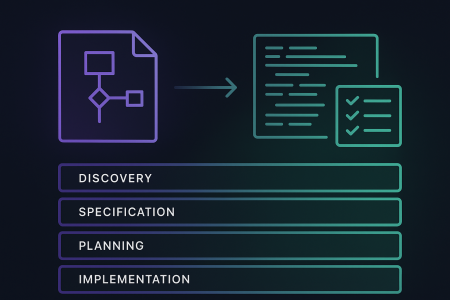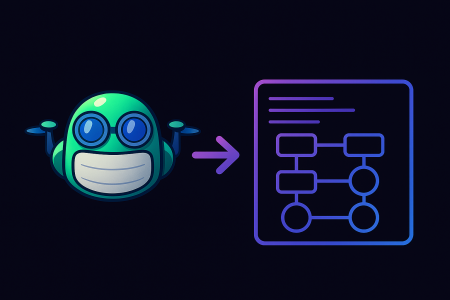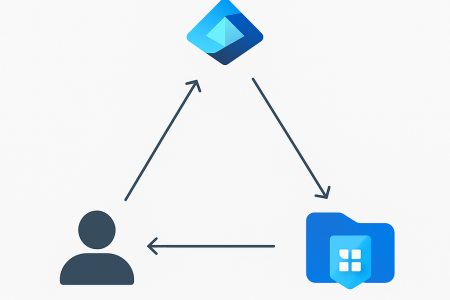Rubber Ducks? What does that have to do with the Cloud and Generative AI?
Remember when we talked about how checklists remain vital even as AI transforms our workflows? Checklists in the AI Era: Still Boring, Still Essential! Well, there’s a perfect example sitting right in your development toolkit: the evolution from rubber duck debugging to AI-powered troubleshooting assistants.
There’s a lot of noise about Generative AI right now. Hype. Doom. LinkedIn posts that feel like someone dropped an MBA into a blender with a thesaurus. But here’s the truth as lived by someone in the trenches of cloud security architecture:
Generative AI isn’t some sci-fi overlord, and it’s not your new intern either. It’s a thinking tool. A chaos tamer. A logic sharpener. A second brain, one that’s fast, weirdly insightful, and absolutely unfazed by your 600-tab browser meltdown.
I don’t use Generative AI to replace my work. I use it to confront my thinking. To pressure test it. To challenge the lazy parts of my mental process and get to sharper, cleaner outcomes.
Here’s what that actually looks like in practice.

Rubber Ducky 2.0 ~ Lord Quacksbury of the High Council of Compliance “Officially non-judgemental, unofficially disappointed”
1. Brainstorming: The Duck, Reimagined
You know the rubber duck method, explain the problem out loud, and half the time you realise what’s broken just by saying it. Useful, sure. But that duck never asked you why your Entra ID design assumes all B2B (RIP) users are low risk. Or whether you really need 14 Conditional Access policies for 3 use cases.
Generative AI does.
Drop in a half-formed scenario like say:
“I want to create Conditional Access policies for a law firm that allows for secure external collaboration with barristers while preventing data exfiltration.”
It’ll give you:
- A starting structure (e.g., baseline policies + role-based layering).
- Suggestions for what to exclude (e.g., don’t target service principals unless you enjoy tears).
- Ideas from other domains you didn’t consider (e.g., the healthcare sector’s approach to just-in-time access for contractors).
It’s not right all the time, that’s not the point. It’s a sparring partner. One that can throw 50 ideas at the wall in 30 seconds while you figure out what sticks.
2. Troubleshooting: A Tangle in the Logs
Let’s talk Intune. There you are, staring into the abyss of a device compliance report that says 42 devices are “Not Applicable” for a policy you’re sure should apply.
Generative AI to the rescue:
- Paste in the JSON of the policy.
- Drop the device logs.
- Describe your assumptions (e.g., “All these devices are running Windows 11 22H2 and are hybrid-joined”).
In return, you get:
- A list of things you may have missed (platform targeting, scope tags, group membership bugs).
- A reminder that the device may be excluded due to dynamic group logic.
- A suggestion that the policy may be tied to an old compliance setting that’s deprecated.
It won’t replace your MEM console. But it will help you stop doomscrolling TechNet and start triangulating real causes faster.
Also, when the logs are 300 lines deep and your brain is soup? It summarises them. Not with magic, but with just enough precision to point your next diagnostic action.
3. Planning: Chaos Into Cadence
Strategic planning usually means you’ve got an idea, like “Let’s introduce Defender for Identity and link signals into Conditional Access”, and a whole bunch of unknowns:
- What’s the rollout order?
- What’s the user impact?
- What’s the executive narrative?
Generative AI helps you:
- Sketch implementation phases with increasing enforcement levels.
- Draft policy deployment waves (pilot, staging, production).
- Map dependencies, like ensuring sensor deployment happens to the right servers
Need to justify it to leadership? Drop in the bones of a business case. Ask it to write the story for someone non-technical. Refine it until it sounds like something you’d actually say. You’re not outsourcing your voice, you’re fast-tracking the friction out of writing.
One day it helped me plan out an Intune and Entra ID hybrid configuration for a merger scenario, two companies with completely different device standards, identity models, and zero shared governance. I fed in:
- Existing tenant posture.
- Known blockers.
- Integration goals.
It gave me:
- A draft 90-day roadmap.
- Highlighted areas for user training.
- Suggested security controls based on conflicting Conditional Access defaults.
Perfect? No. Useful? Hugely.
4. Challenge My Thinking: Devil’s Advocate With Syntax Highlighting
This is the real power move. I already know what I think. What I need is something that doesn’t care about my assumptions.
So I feed Generative AI my strategy docs and say:
- “Argue against this like you’re a compliance officer.”
- “What would a risk-averse CIO push back on here?”
- “Find the flaw in this logic.”
It’ll:
- Flag assumptions I didn’t state.
- Challenge scope boundaries (e.g., “Why are you excluding guest users from risk-based policies?”).
- Simulate pushback: “What’s the impact on frontline staff if legacy auth is blocked too soon?”
This has saved my hide more than once in C-level reviews. Not because AI knows better, but because it forces me to know better.
Want a nasty real-world example? I wrote a policy set that enforced strong authentication for high-privilege users based on risk levels. I thought I was clever.
Generative AI said: “What if risk signals lag by several minutes and the attacker is using a previously trusted session?”
I updated the logic to combine device compliance, session lifetime control, and token protection.
That’s the game. It keeps you from believing your own hype.
Bottom Line: AI Isn’t Replacing Architects, Admins Or Engineers But It’s Definitely Replacing Silence
If you’re someone who:
- Thinks strategically,
- Designs systems that actually get deployed,
- Needs to balance control, risk, usability, and reality
Generative AI isn’t a toy. It’s definitely a power-up.
The more ambiguity in your work, the more valuable it becomes. You’ll still need judgment, taste, and experience. But this thing will shorten your loop between idea → clarity → action.







